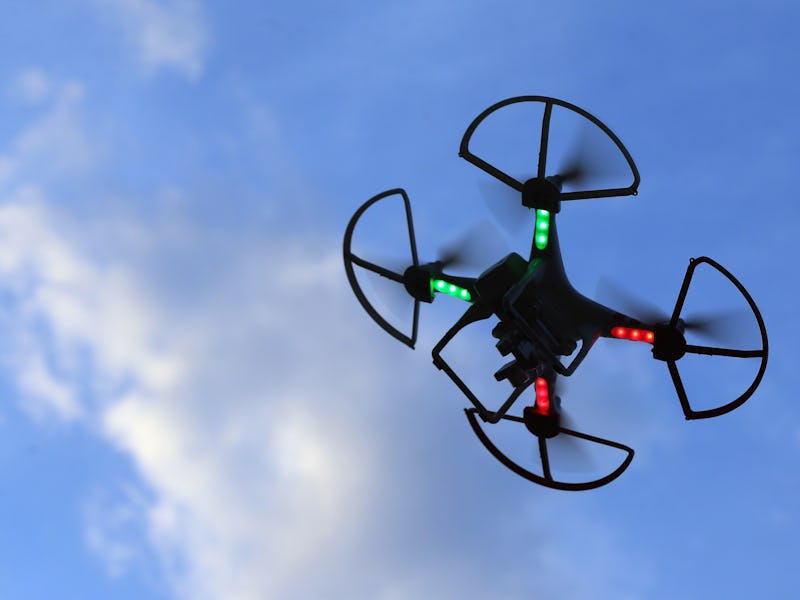Kentucky Drone Shooter Case May Let FAA Dictate Legal UAV Flight Heights
A lawsuit may start to define some boundaries.

If 2015 was the year of the drone, 2016 is turning out to be the year of drone regulations. The Federal Aviation Administration has ordered that all drones be registered with the federal government by February of this year and is imposing major fines on operators flying near restricted spaces.
Now, thanks to a lawsuit filed in federal court seeking damages from a Kentucky man who shot down his neighbor’s drone as it allegedly flew over his property, the FAA may receive the authority to regulate even more precisely where it is legal to fly a drone, even over your own property.
Back in July, William Merideth sniped neighbor David Boggs’ drone out of the sky as it flew about 200 feet above his property. Meredith has been cleared of criminal charges for the incident, but now Boggs is claiming that since his flight could not be thought of as trespassing in the traditional sense, he is entitled to damages due to the destruction of his drone.
What makes the case unique is that the federal court will have to wade into an area where there is very little precedent to act as guidance. The FAA, of course, governs the airspace of the United States, a vast and complicated area that sees thousands of major commercial flights every day, but it’s not clear when airspace even begins. Everyone has the right to build a house on their property without informing federal airspace regulators, right?
Well, the FAA told Ars Technica last year that it is “is responsible for the safety and management of U.S. airspace from the ground up,” and the drone operator in the Kentucky case is asserting that “the United States Government has exclusive sovereignty over airspace of the United States.” So, if the airspace over your house belongs to the government, then you don’t have the right to claim that a drone operating there is trespassing on your property, any more than you’d have such a claim against a helicopter pilot flying overhead.
Established case law suggests that owning property guarantees at least the right to use of the area up to 83 feet above ground level, effectively the height of anything you might need to build, and sets the minimum height of a safe manned flight at 500 feet. While it may seem crazy that above our heads there’s 417 feet of Wild West, before the growth of the consumer drone fleet, the issue just didn’t come up very often.
The drone operator in the Kentucky case is seeking a ruling on a single, small incident that could have major ramifications for airspace regulations. Conceivably, the court could rule that anything above 83 feet belongs to the United States, and the FAA could then ban all drone flights beyond that level, even over the property of the drone operator. Given the FAA’s recent skepticism about the rights of drone users, that could be exactly what they want to do too.
On the other hand, the court could rule that a property owner possesses the rights to land beyond 83 feet, and individuals would then retain control over the skies above their houses. The best hope for this ruling resides in a centuries-old precedent from Great Britain that the courts have ruled grants property rights to much of the land beneath a property, in particular possible natural gases. Ad coelum et ad inferos means “to the heavens and to hell” and could be interpreted as granting broad rights over the land above a property, though defining the start of heaven might stretch federal jurisdiction in itself.
The ruling could have major consequences for how our drone futures evolve. Take Amazon’s vaunted drone delivery system, for example. If the court agrees that the FAA has the authority to govern airspace between 83 and 500 feet, and the agency proceeds to impose a new web of regulations and permits, it could hamper any new flights. You might have to forget about drone-delivered pizzas and beer if the start up has to go through a complicated federal approval process every time it needs to launch.
It’s also hard to see how any new regulations would be enforced. The shooter in Kentucky certainly demonstrated the power of brute force against the new technology, but any major restrictions would be great news for new anti-drone technologies. One could easily imagine security systems interacting silently with drones in the future, sending out the radio equivalent of a “violators will be shot” sign at the fence line.